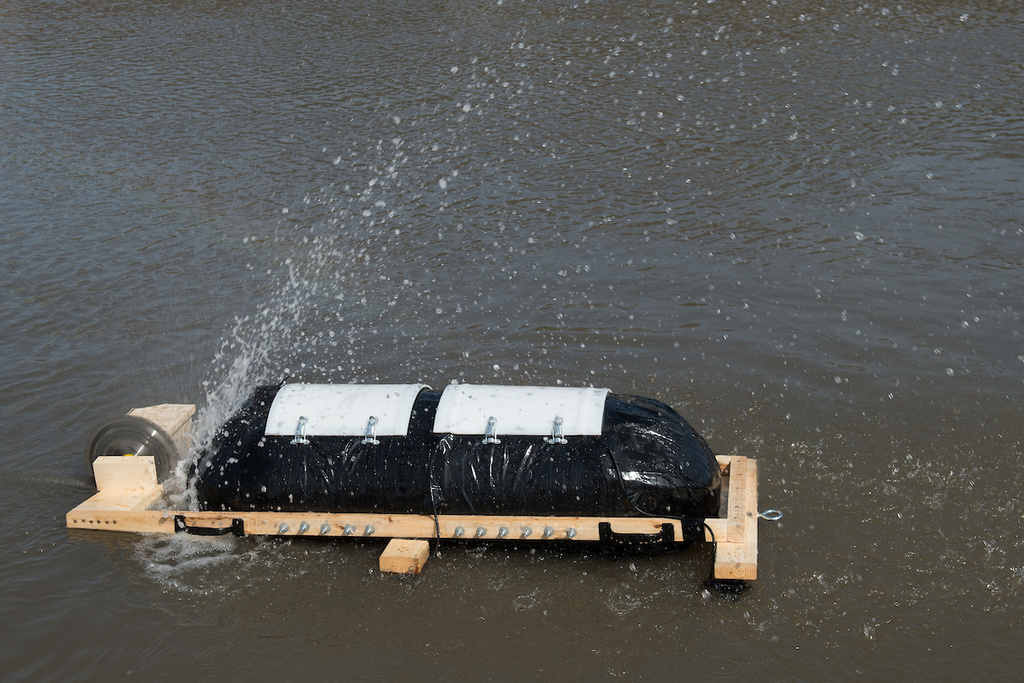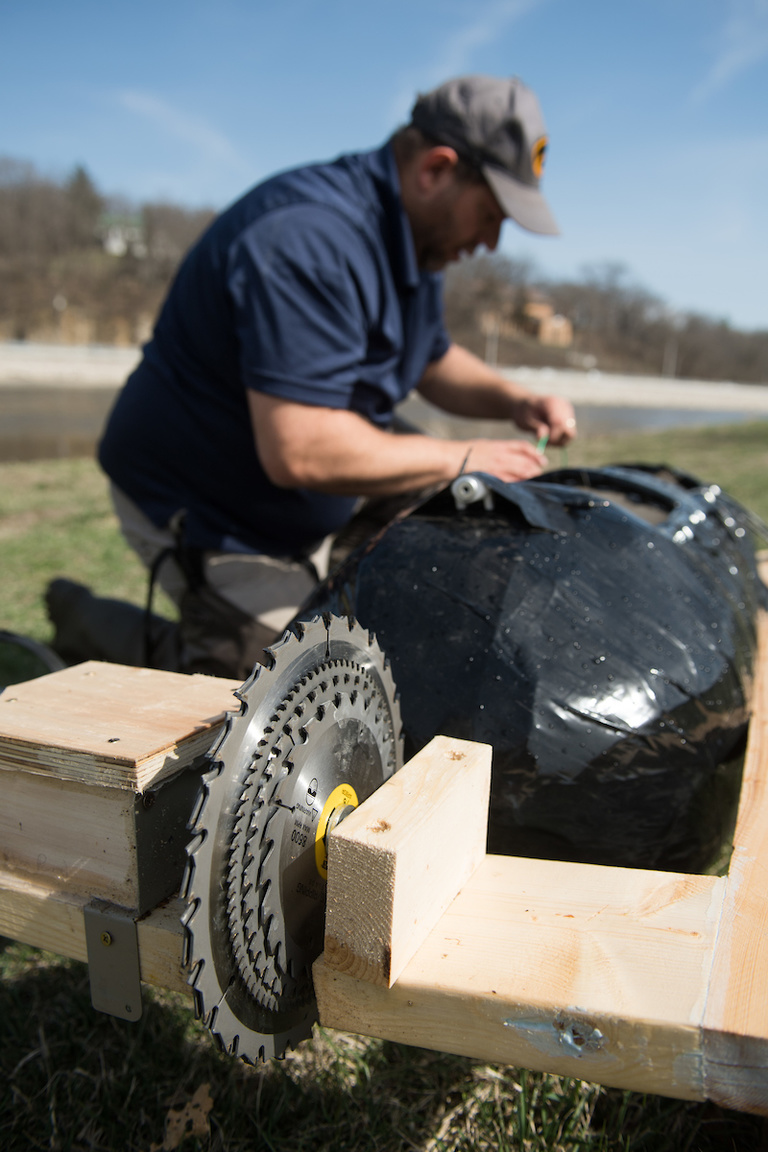Michael Simon was standing on the bank of the Iowa River during a geology class when he had an idea.
He and his University of Iowa classmates were looking at a pileup of debris—mostly trees and other woody matter—that clogged a section of the river under a bridge south of the Iowa Memorial Union. The instructor, Associate Professor of Earth and Environmental Sciences Frank Weirich, was explaining how such pileups can cause localized flooding and alter the river’s natural flow.
“I decided, ‘Well, I’ve seen a problem to fix,’” Simon says.
So Simon, a veteran and geoscience major from Guttenberg, Iowa, conceived a plan to design and build a remote-controlled craft to motor over to static debris piles and saw through the timber tangle. His invention, the RC Beaver (RC for remote-controlled), won $3,000 in business competitions sponsored through the Tippie College of Business and set Simon on an entrepreneurial path after he graduates in May.
“I feel like I’m bringing a business-oriented mind to the field of geology,” says Simon, who lives in Coralville, Iowa, with his wife, Eva (also a UI undergraduate majoring in art), and their three adopted children. “I’m not a businessman in the classic sense, but I’m an idea person, I guess.”
It’s quite a turn of events for the 43-year-old Simon in his second go-round as an undergraduate at the UI.
He first enrolled at the UI in 1992 with an initial interest in engineering. He later switched his major to geology, but says he struggled with some outside academic requirements, notably foreign language and math. Adding to the stress, he was attempting to pay for school mostly on his own.
“I wasn’t very focused,” Simon says. “I kind of ran out of money, so I dropped out.”

He returned to Guttenberg and worked construction. The work paid little more than minimum wage, though, and Simon decided to enlist in the Navy, the branch in which his father and grandfather had served. He was deployed on submarines as an electronics technician, responsible for plotting the vessel’s course and for monitoring oxygen and carbon-dioxide levels inside. Simon says the most valuable lessons he learned during his five years in the Navy were the value of teamwork “and a greater sense of responsibility, working for a purpose.”
Simon also rediscovered another purpose: He wanted to return to school.
“I spent four-and-a-half years at college, and I didn’t get that degree,” Simon says. “I wanted to finish what I started.”
Simon re-enrolled at the UI in 2014. He focused from the get-go, pursuing a geoscience degree and an entrepreneurial management certificate.
Those twin interests converged in fall 2016 when Simon saw the entanglement stacked under the Iowa Avenue bridge during Weirich’s class on fluvial geomorphology.
“I asked about it, since it was something I could see,” Simon recalls. “He said, ‘Yeah, that kind of stuff can cause localized floods, and it could be bad for the river because it changes the way the currents flow and how scour happens.’”
A few days later, Simon was chosen along with some other classmates to present business ideas in Entrepreneurship and Innovation, a class taught by Joseph Sulentic, associate professor in the Tippie College of Business. Students picked the idea that most interested them. Simon made his pitch.
“I kind of pulled my idea out of the air,” he says. “I was just going to join a restaurant idea. But other students really liked my idea, and they joined me.”

Sulentic describes Simon’s proposal as mature because it involved designing and manufacturing a product to solve an existing problem.
“It made it realistic,” Sulentic says. “It wasn’t just this pie in the sky idea, because anyone can come up with an idea.”
Emboldened, Simon joined the Founders’ Club, run by the UI’s John Pappajohn Entrepreneurial Center (JPEC). He won $500 last fall in the JPEC Rose Francis Elevator Pitch Competition for the RC Beaver concept and earned $2,500 for a second-place finish at a business model competition this spring, also sponsored by JPEC.
Working with three electrical and computer engineering undergraduates who heard his business pitch in a senior capstone class, Simon built a prototype and tested it at the Coralville Reservoir in December.
He is now refining the cutting blade on the remote-controlled craft and is seeking a provisional patent for his invention.
Sulentic says he likes Simon’s idea because the remote-powered debris cutter could be less expensive than the current practice of placing cranes on bridges and using a suspended backhoe to clear the debris.
“There’s no doubt it can save the state money,” Sulentic says. “And that’s the opportunity. If there’s a way to make money for someone, or save someone money, then there’s a clear interest.”
A career plan in mind, Simon looks forward to life after graduation.
“It will feel great and a little scary,” he says. “Great that I’ve completed this thing that I’ve been working on for a long time, but a little scary that I’m on my own. I’ve got to put to work what I’ve learned in this new beginning.”